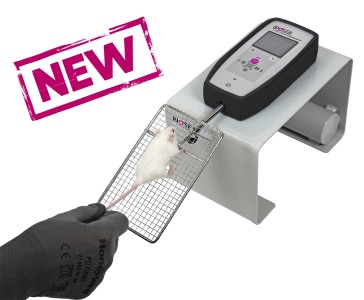Authors
SG Liva, YC Tseng, AM Dauki, MG Sovic, T Vu et al
Lab
Division of Pharmaceutics and Pharmacology, College of Pharmacy, The Ohio State University, Columbus, OH, USA
Journal
EMBO Molecular Medicine
Abstract
No approved therapy exists for cancer-associated cachexia. Thecolon-26mouse model of cancer cachexia mimics recent late-stage clinical failures of anabolic anti-cachexia therapy and was unresponsive to anabolic doses of diverse androgens, including the selective androgen receptor modulator (SARM) GTx-024. The histone deacetylase inhibitor (HDACi) AR-42exhibited anti-cachectic activity in this model. We explored combined SARM/AR-42 therapy as an improved anti-cachectic treatment paradigm. A reduced dose of AR-42provided limited anti-cachectic benefits, but, in combination with GTx-024, significantly improved bodyweight, hindlimb muscle mass, and grip strength versus controls.AR-42suppressed the IL-6/GP130/STAT3signaling axis in muscle without impacting circulating cytokines. GTx-024-mediatedb-catenin target gene regulation was apparent in cachectic mice only when combined with AR-42. Our data suggest cachectic signaling in this model involves catabolic signaling insensitive to anabolic GTx-024therapy and a blockade of GTx-024-mediatedanabolic signaling. AR-42mitigates catabolic gene activation and restores anabolic responsiveness to GTx-024. Combining GTx-024,a clinically established anabolic therapy, with AR-42, a clinically evaluated HDACi, represents a promising approach to improve anabolic response in cachectic patients.
BIOSEB Instruments Used
Grip strength test (BIO-GS3)
Source :

 Pain - Thermal Allodynia / Hyperalgesia
Pain - Thermal Allodynia / Hyperalgesia Pain - Spontaneous Pain - Postural Deficit
Pain - Spontaneous Pain - Postural Deficit Pain - Mechanical Allodynia / Hyperalgesia
Pain - Mechanical Allodynia / Hyperalgesia Learning/Memory - Attention - Addiction
Learning/Memory - Attention - Addiction Physiology & Respiratory Research
Physiology & Respiratory Research











![Dynamic Weight Bearing 2.0 – Postural Module [Add-on]](https://bioseb.com/733-home_default/dynamic-weight-bearing-20-add-on-postural-module.jpg)
























 Pain
Pain Central Nervous System (CNS)
Central Nervous System (CNS) Neurodegeneration
Neurodegeneration Sensory system
Sensory system Motor control
Motor control Mood Disorders
Mood Disorders Other disorders
Other disorders Muscular system
Muscular system Joints
Joints Metabolism
Metabolism Cross-disciplinary subjects
Cross-disciplinary subjects CONFERENCES & MEETINGS
CONFERENCES & MEETINGS 